|
Samyang AF 85mm f/1.4 EF - Review / Test Report - Analysis |
|
Lens Reviews -
Canon EOS (Full Format)
|
|
Page 2 of 3

Distortion
The Samyang AF 85mm f/1.4 EF produces slight pincushion distortions of just under 0.8%. This is usually nothing to worry about.
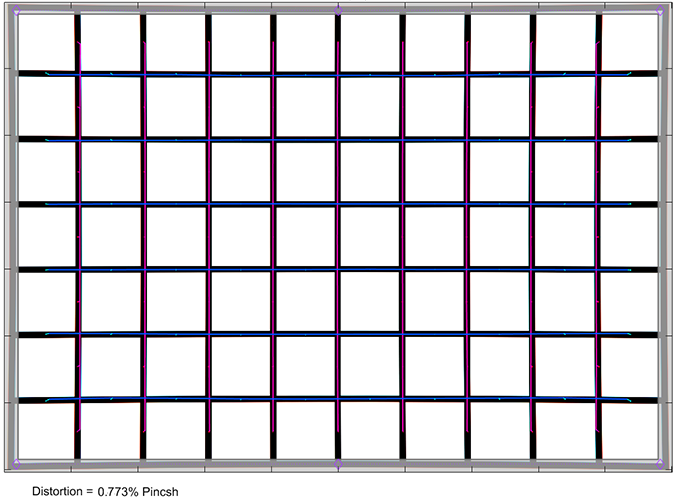
Vignetting
The vignetting characteristic is about average for a lens in this class - there’s some clearly visible light falloff of ~2.3EV (f-stops) at f/1.4. Stopping down to f/2 reduces the issue to ~1.1EV which isn't overly disturbing anymore. The vignetting is pretty much negligible from f/4 onward.

MTF (resolution) on the EOS 5Ds R (at 50 megapixels)
The Samyang AF 85mm f/1.4 EF is a lens with two souls. If you check the sample image section, you will notice that is dead sharp at near infinity settings. However, the performance isn't quite as good as shorter focus distances. Our test was performed from a distance of 3.5m. This is far from being a macro scenario and roughly equivalent to an upper body portrait taken with this. The drop of quality was already quite obvious as you can see in the charts below. The dead center quality is (just) very good at f/1.4 but the near center is already down to good quality here. The outer image field is soft. Stopping down to f/2 doesn't change much. There's a slight increase in quality at f/2.8. The peak performance is reached between f/4 and f/8. The broader center zone isn't bitingly sharp but certainly sufficient even for demanding users. The borders/corner remain just fair though. As usual, negative diffraction effects set in from f/11 onward.
The centering quality of the tested sample was Okay. The field curvature is low.
Please note that the MTF results are not directly comparable across the different systems!
Below is a simplified summary of the formal findings. The chart shows line widths per picture height (LW/PH) which can be taken as a measure for sharpness.
If you want to know more about the MTF50 figures you may check out the corresponding Imatest Explanations

MTF (resolution) on the EOS 5D II (at 21 megapixels)
Why are the MTF numbers sometimes "better" on 21 megapixels compared to 50 megapixels ? There are two reasons for this. Lateral CAs are lower in terms of pixel widths at 21mp simply because the pixel density is also lower. Extreme CAs that may exist at 50mp are therefore less affecting the measurements at 21mp. Generally, we are also using a certain degree of sharpening during the image conversion (just like in real life images) and because the 21mp results are "sharper" on pixel level they are relatively more receptive to (mild base-) sharpening.
For the sake of comparison with our legacy tests, we are supplying MTFs taken at 21 megapixels below. This is far from being as demanding as the MTFs based on a 50-megapixel sensor. Even so, the results aren't overly impressive compared to other prime lenses. The corner/border weakness remains at large aperture settings albeit it isn't quite as pronounced anymore. Stopping down shows the same gradual increase in quality. The center quality is excellent between f/4 and f/8 on this sensor and the outer image field is at least good to very good here.
Please note that the MTF results are not directly comparable across the different systems!
Below is a simplified summary of the formal findings. The chart shows line widths per picture height (LW/PH) which can be taken as a measure for sharpness.
If you want to know more about the MTF50 figures you may check out the corresponding Imatest Explanations
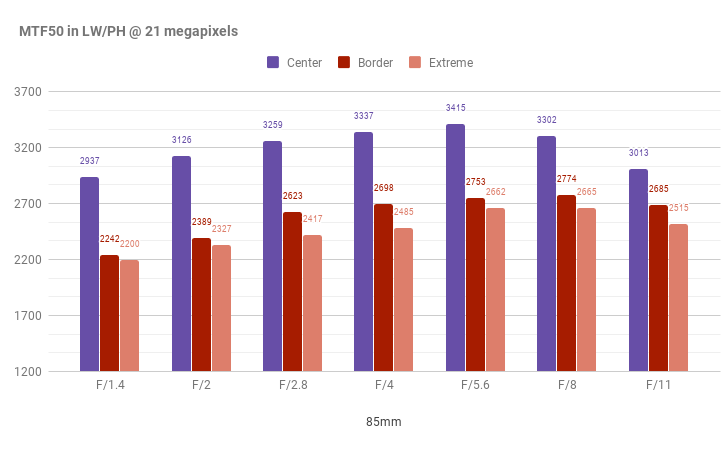
Chromatic Aberrations (CAs)
Lateral CAs aren't exactly a strength of the Samyang AF 85mm f/1.4 EF. They are fairly low at large apertures but worsen substantially from f/2.8 onward. The average CA pixel width hovers around 3px from f/4 to f/11. Lateral CAs can be corrected during post-processing but this shouldn't happen in the first place.

Bokeh
We didn't run our usual/full set of formal bokeh test this time but we'll share some thoughts about this aspect anyway.
Out-of-focus highlights are quite nicely rendered - thus with an even inner zone as well as little outlining (shown at f/1.4 below). As usual, the circular shape deteriorates towards the borders/corners.
 To the right, you can observe the "general" foreground bokeh which has a fairly harsh contrast halo (Nisen bokeh). The background bokeh is shown to the left and it is ... weird ... like being soaked in very low contrast.
To the right, you can observe the "general" foreground bokeh which has a fairly harsh contrast halo (Nisen bokeh). The background bokeh is shown to the left and it is ... weird ... like being soaked in very low contrast.
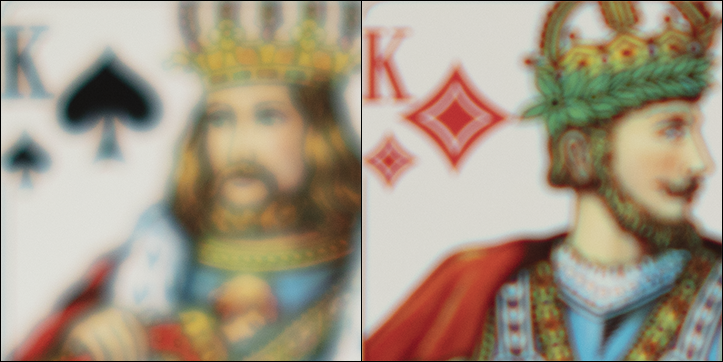 This test is done at fairly close focus distances. However, this halo smearing is also present at medium distances (the head below is actually a crop from a much bigger image - see also the sample image section).
This test is done at fairly close focus distances. However, this halo smearing is also present at medium distances (the head below is actually a crop from a much bigger image - see also the sample image section).
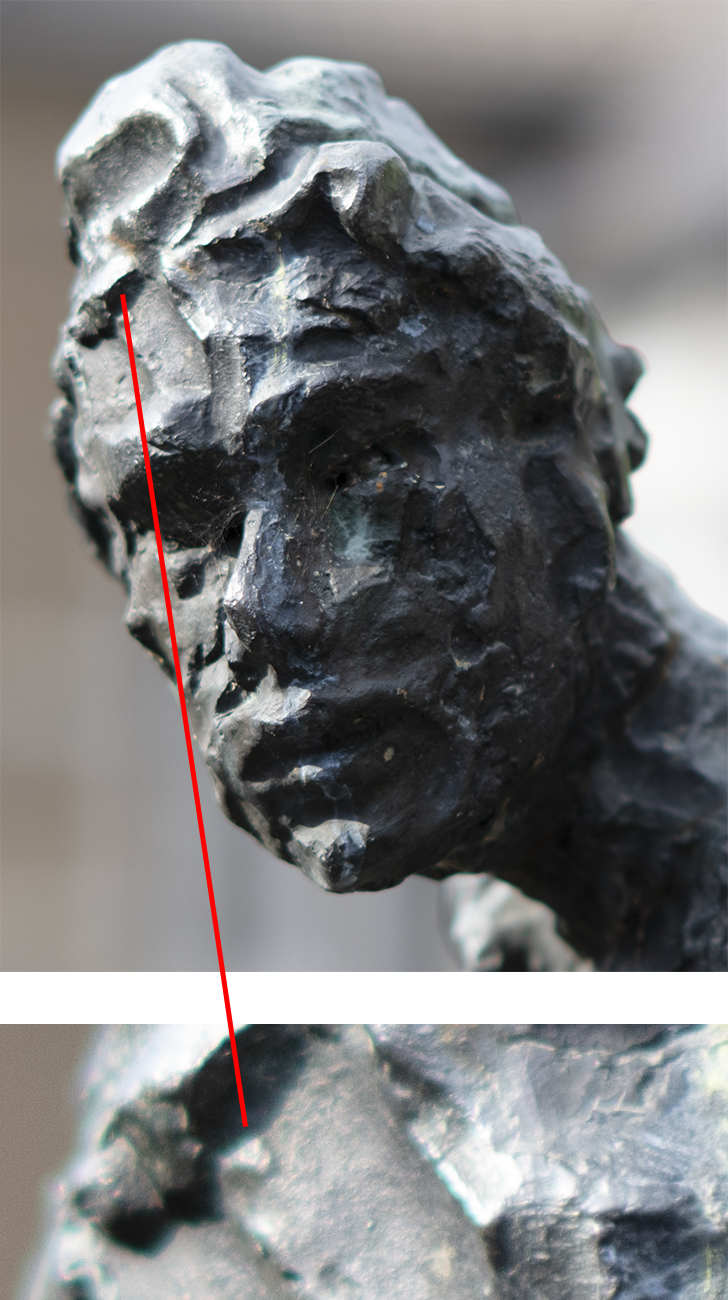 Now please note that this doesn't mean that the lens isn't capable of producing a background blur - that comes free with the large aperture anyway. The above is about the behaviour in the focus transition zone and other lenses produce nicer results here.
Now please note that this doesn't mean that the lens isn't capable of producing a background blur - that comes free with the large aperture anyway. The above is about the behaviour in the focus transition zone and other lenses produce nicer results here.
Bokeh Fringing
Typical for pretty much all ultra high-speed lenses, the Samyang suffers from bokeh fringing (axial CAs). You may spot the greenish halos in the image background and the purplish fringing in the image foreground below.
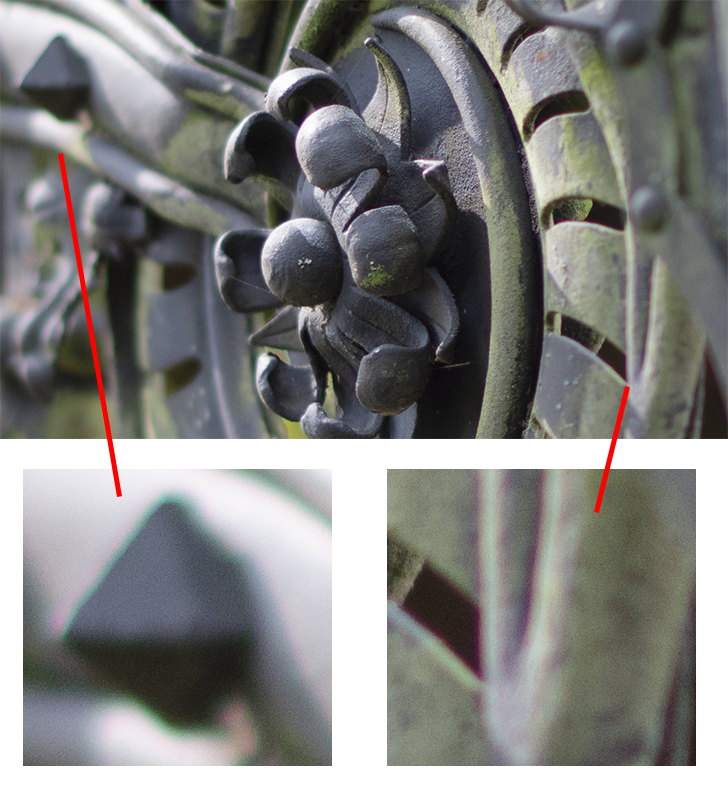
|